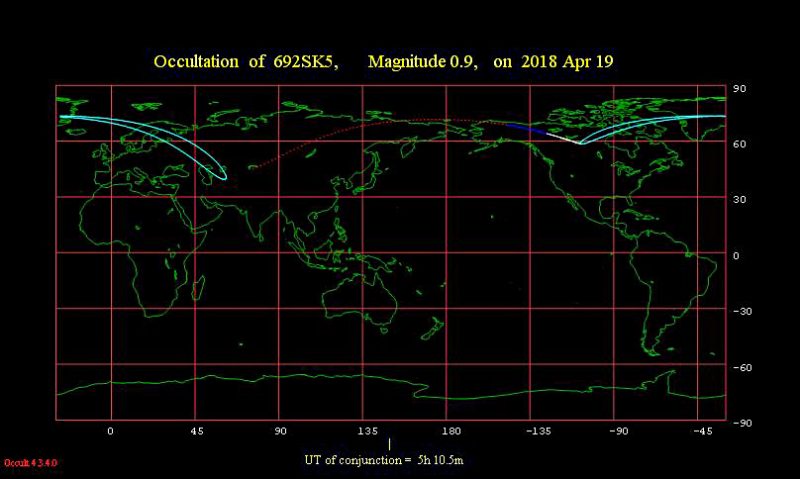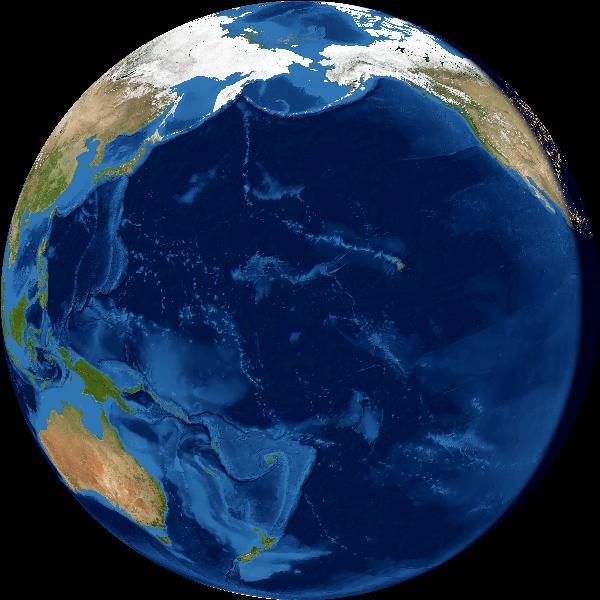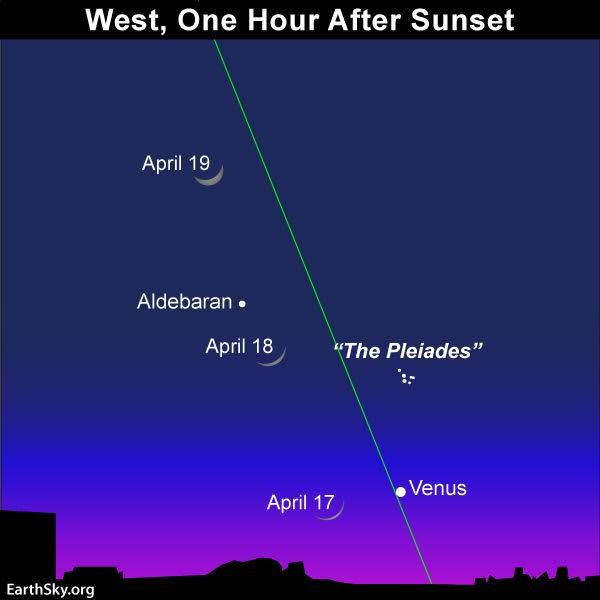For the next few evenings, – April 17 to 19, 2018 – look for some gorgeous pairings of the moon and brightest planet Venus. You’ll find them in the west shortly after the sun goes down.
The moon and Venus rank as the second- and third-brightest celestial objects, respectively, after the sun. You’ll want an unobstructed western horizon to see them, and you’ll want to be outside close to the time of sunset, because Venus will soon follow the sun below the western horizon. As for the moon, it’ll be very near Venus on April 17, moving up and away from Venus on April 18 and 19.
On April 18, notice that the waxing crescent moon is closer to Aldebaran, the brightest star in the constellation Taurus the Bull. From just the right spot on Earth, you can actually watch the moon occult (cover over) Aldebaran. On the night of April 18-19, 2018, Aldebaran will disappear behind the moon’s dark side and then reappear on its illuminated side.
The chart below shows who will see the occultation.

As you watch the waxing crescent moon, Venus, and Aldebaran over the next several days, pay special attention to the lunar terminator, the line between light and dark on the moon’s face. On a waxing moon, this is the line of sunrise. With any sort of optical aid – binoculars or a small telescope – the terminator provides the best three-dimensional views of the lunar landscape, highlighting craters and mountains. You’ll also see features on the moon best if you observe in twilight, rather than later at night, when the contrast between the moon and the darkness of night creates glare.
While you’re perusing the moon with the eye alone or an optical aid, note the darkened portion of the crescent moon. It might be softly aglow in earthshine, which is twice-reflected sunlight. That is, it’s sunlight that bounces from Earth to the moon – and then from the moon back to Earth. When the moon is a slender crescent in Earth’s sky, then the Earth exhibits a large waning gibbous phase in the lunar sky. A nearly full Earth will illuminate the the moon’s dark side in our sky for the next several nights.

Bottom line: On April 17 to 19, you’ll see some gorgeous pairings of the moon and brightest planet Venus. You’ll find them in the west shortly after the sun goes down.












